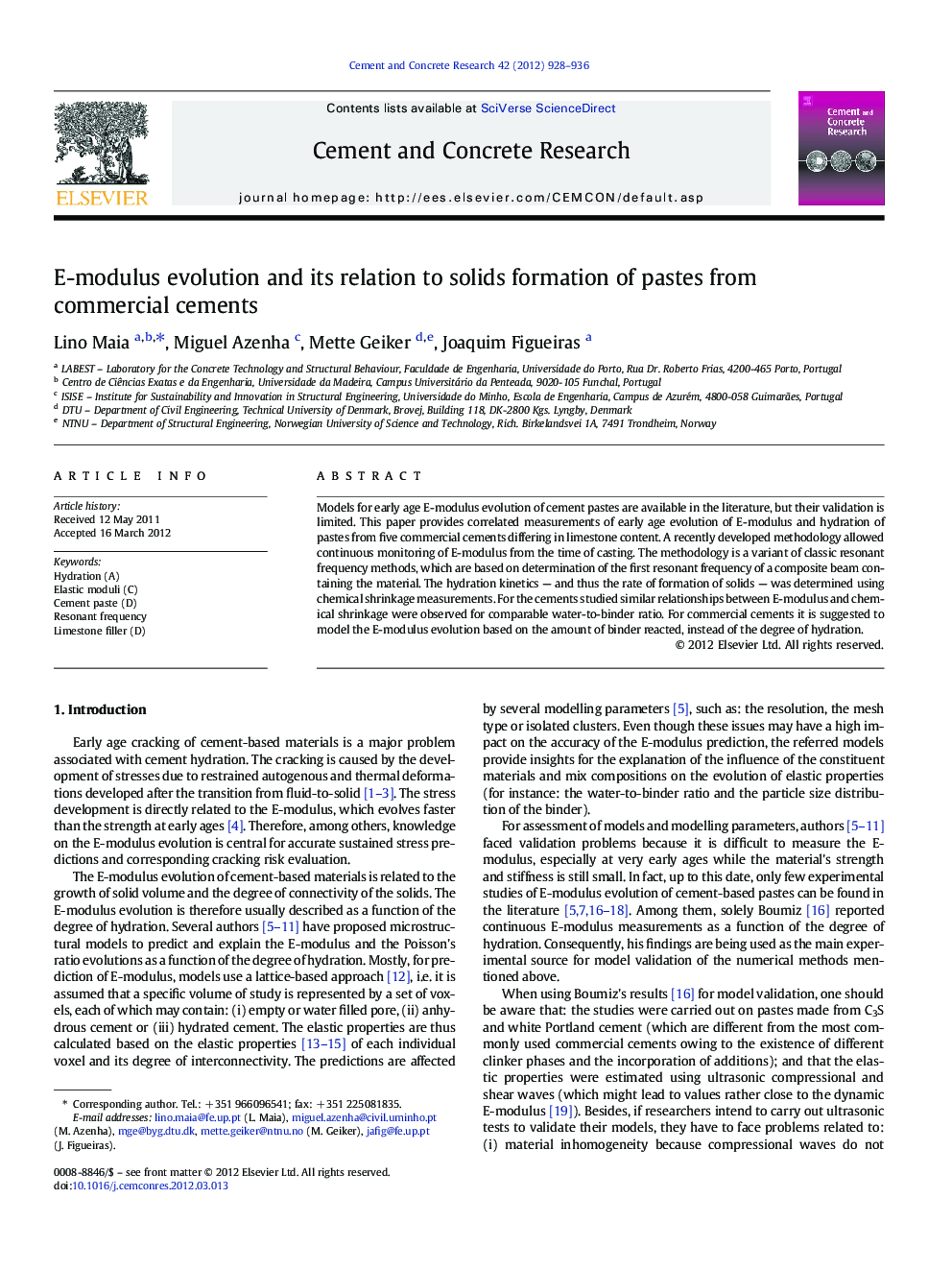| کد مقاله | کد نشریه | سال انتشار | مقاله انگلیسی | نسخه تمام متن |
|---|---|---|---|---|
| 1456676 | 989218 | 2012 | 9 صفحه PDF | دانلود رایگان |

Models for early age E-modulus evolution of cement pastes are available in the literature, but their validation is limited. This paper provides correlated measurements of early age evolution of E-modulus and hydration of pastes from five commercial cements differing in limestone content. A recently developed methodology allowed continuous monitoring of E-modulus from the time of casting. The methodology is a variant of classic resonant frequency methods, which are based on determination of the first resonant frequency of a composite beam containing the material. The hydration kinetics — and thus the rate of formation of solids — was determined using chemical shrinkage measurements. For the cements studied similar relationships between E-modulus and chemical shrinkage were observed for comparable water-to-binder ratio. For commercial cements it is suggested to model the E-modulus evolution based on the amount of binder reacted, instead of the degree of hydration.
Journal: Cement and Concrete Research - Volume 42, Issue 7, July 2012, Pages 928–936